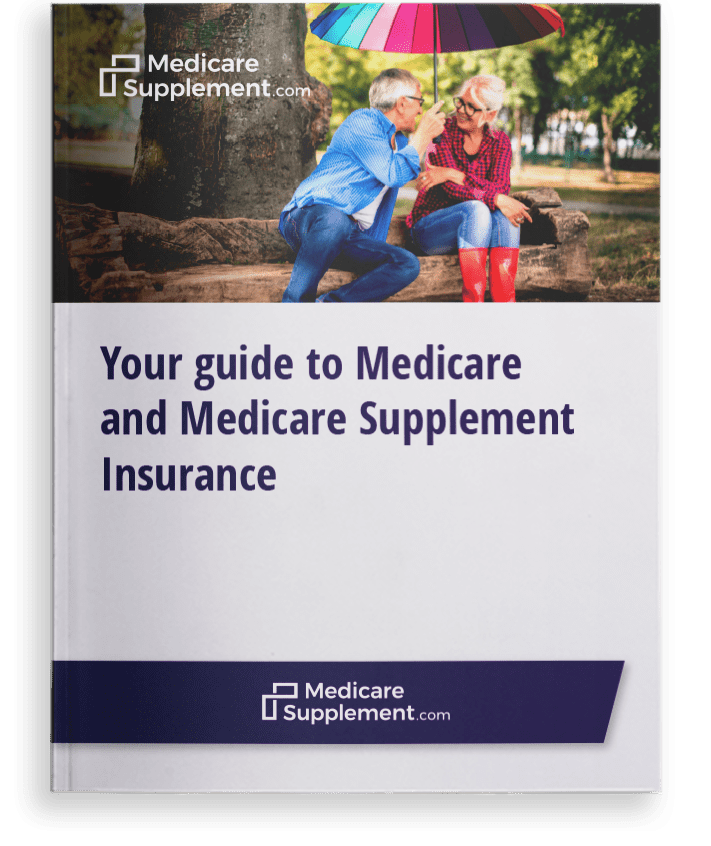Medicare 101
What Is Medigap?
Medigap (also called Medicare Supplement Insurance) is health insurance you can buy from private insurance companies to supplement your Original Medicare (Part A and Part B) benefits.
Plans offer different combinations of basic benefits to help pay out-of-pocket costs, such as coinsurance, copayments and deductibles.
 Medigap plans help pay for out-of-pocket Medicare costs, which can add up quickly if you get sick or suffer an injury.
Medigap plans help pay for out-of-pocket Medicare costs, which can add up quickly if you get sick or suffer an injury.Medigap Eligibility Requirements and When to Enroll
If you’re already enrolled in Medicare Part A and Part B, you’re likely eligible for Medigap coverage.
The best time to buy a Medigap policy is when you first become eligible — during your 6-month Medigap Open Enrollment Period (OEP), which begins the day you are both 65 or older and enrolled in Medicare Part B.
-
If you apply for Medigap Insurance within your OEP, carriers must allow you to enroll in any plan you choose at an affordable rate — regardless of medical history or pre-existing conditions.
-
Once the open enrollment window passes, you may be subject to medical underwriting and you could be charged higher premiums or be denied coverage altogether based on your health.
-
You may also be exempt from underwriting if you qualify for a guaranteed-issue right.
Some states offer Medicare Supplement Insurance to those under 65 who have qualifying disabilities, but federal law does not require insurance companies to sell Medigap policies to people under 65.
If you’re under 65 and covered by Medicare, you might not be able to buy a Medigap policy — or you might be charged more for the policy because of pre-existing conditions.
Comparing Medigap Plan Types
In most states, there are 10 standardized Medigap plans to choose from — labeled Plan A, B, C, D, F, G, K, L, M and N.
Important: Plan F and Plan C are not available to beneficiaries who became eligible for Medicare on or after January 1, 2020. If you became eligible for Medicare before 2020, you may still be able to enroll in Plan F or Plan C if they are available in your area.
Each plan type offers a different combination of basic health care benefits. But every insurance company that sells a particular type of plan must adhere to the government's basic benefits standards.
For example, one insurer’s Plan G will offer the same coverage as another’s Plan G. The only difference between the two Plan G policies is the premium rate set by the carriers and potential additional benefits they may offer.
Medigap Plan Benefits
Health care costs left by Original Medicare coverage are often referred to as the “gaps” in Medicare.
Each Medigap policy helps pay for some variation of the following Medicare-related health care expenses:
-
Medicare Part A coinsurance and hospital costs
-
Medicare Part B coinsurance or copayments
-
Blood (first three pints)
-
Part A hospice care coinsurance or copayments
-
Part A deductible
-
Part B deductible
-
Part B excess charges
-
Skilled nursing facility care coinsurance
-
Foreign travel emergency care costs
The first four benefits are basic health benefits, covered in part, by every Medigap policy. The remaining five may or may not be included, depending on which type of plan you choose.
To see what covered benefits each type of Medigap plan includes and to compare plans, use the chart below.
Scroll to the right to continue reading the chart
Medicare Supplement Benefits
Part A coinsurance and hospital coverage
Part B coinsurance or copayment
Part A hospice care coinsurance or copayment
First 3 pints of blood
Skilled nursing facility coinsurance
Part A deductible
Part B deductible
Part B excess charges
Foreign travel emergency
| Medicare Supplement Benefits | A | B | C* | D | F1* | G1 | K2 | L3 | M | N4 |
|---|---|---|---|---|---|---|---|---|---|---|
| Part A coinsurance and hospital coverage | ||||||||||
| Part B coinsurance or copayment | 50% | 75% | ||||||||
| Part A hospice care coinsurance or copayment | 50% | 75% | ||||||||
| First 3 pints of blood | 50% | 75% | ||||||||
| Skilled nursing facility coinsurance | 50% | 75% | ||||||||
| Part A deductible | 50% | 75% | 50% | |||||||
| Part B deductible | ||||||||||
| Part B excess charges | ||||||||||
| Foreign travel emergency | 80% | 80% | 80% | 80% | 80% | 80% |
* Plan F and Plan C are not available to Medicare beneficiaries who became eligible for Medicare on or after January 1, 2020. If you became eligible for Medicare before 2020, you may still be able to enroll in Plan F or Plan C as long as they are available in your area.
+ Read moreComparing Costs of Medigap Plans
The cost of Medicare Supplement Insurance policies varies depending on the level of coverage you choose and the carrier you buy your policy from.
Insurance companies set their own premiums and pricing structure, so you may find that they charge different premiums for the same plan type. As you shop, make sure you’re comparing the same type of Medigap policy.
Additionally, ask your insurance carrier how they set their premiums.
Policies can be priced or “rated” three different ways — affecting how much you pay when you first buy the policy and in the future. This may also explain why one insurance company’s initial premium is different from another’s for the same plan.
Does Medicare Supplement Insurance Include Drug Coverage?
In the past, some Medigap policies offered prescription drug coverage, but they haven’t been allowed to include it in new policies sold since 2006.
If you want to add Medicare prescription drug coverage, you can purchase a stand-alone Medicare Prescription Drug Plan (Part D).
You can compare Part D plans available where you live and enroll in a Medicare prescription drug plan online when you visit MyRxPlans.com.
How Is Medigap Different From Medicare Advantage?
You may have heard of both Medigap and Medicare Advantage (MA). While both are sold by private insurers, they serve different purposes.
-
Medicare Advantage doesn’t supplement Medicare — it offers beneficiaries an alternative way to receive their Original Medicare benefits.
-
Enrollees have the option of joining a Medicare Advantage Plan instead of Original Medicare. Medicare Advantage plans cover the same benefits that are offered by Original Medicare.
-
Medicare Advantage plans often include additonal benefits that Original Medicare doesn't cover. Most Medicare Advantage plans include prescription drug coverage, and some plans may offer coverage for routine dental care, vision care, non-emergency transportation and more.
-
Medicare Advantage Plans have different pricing structures and network stipulations which will vary based on the insurance company providing the plan.
If you enroll in a Medicare Advantage plan you cannot use a Medigap policy to cover your out-of-pocket health care expenses. Medigap can be used only by people enrolled in Original Medicare.
Signing Up For Medigap
To find out more about Medigap plan options, pricing and carriers, call to speak with one of our licensed insurance agents today.
We’ll help you assess your personal health needs and budget and determine the right Medicare Supplement Insurance policy for you.
Find Medigap plans in your area.
Compare Plans
Christian Worstell is a health care and policy writer for MedicareSupplement.com. He has written hundreds of articles helping people better understand their Medicare coverage options.

Get a Free Medicare Guide!
Enter your email address and get a free guide to Medicare and Medicare Supplement Insurance, as well as important Medicare news and tips. We promise to never send you spam – just helpful content!
By clicking "Get your guide" you are agreeing to receive emails from MedicareSupplement.com.

